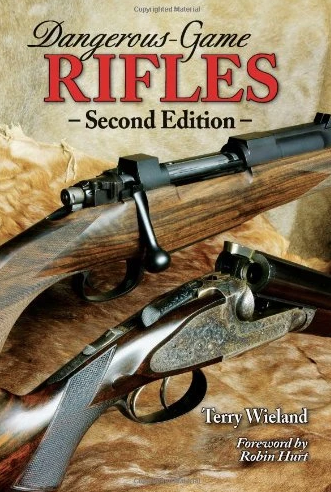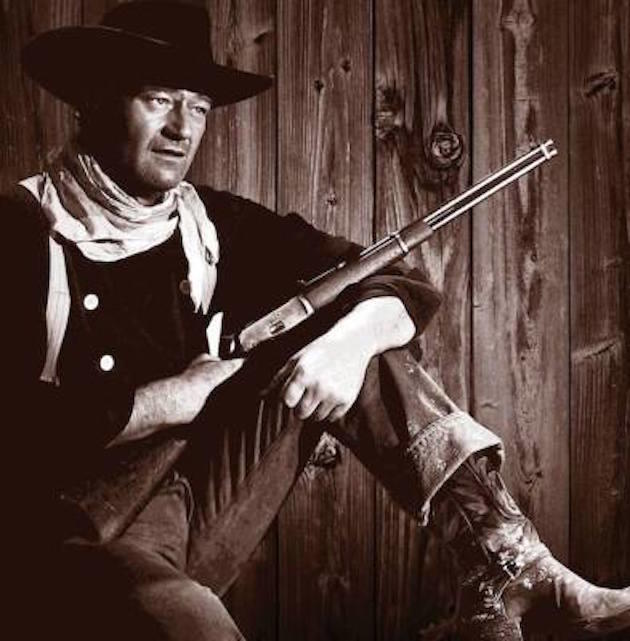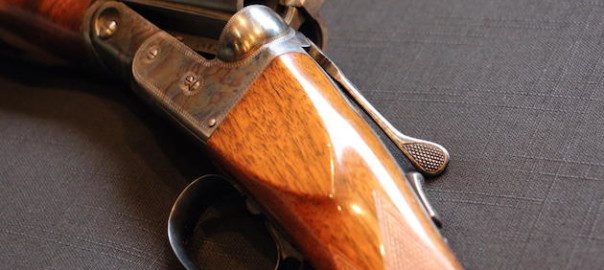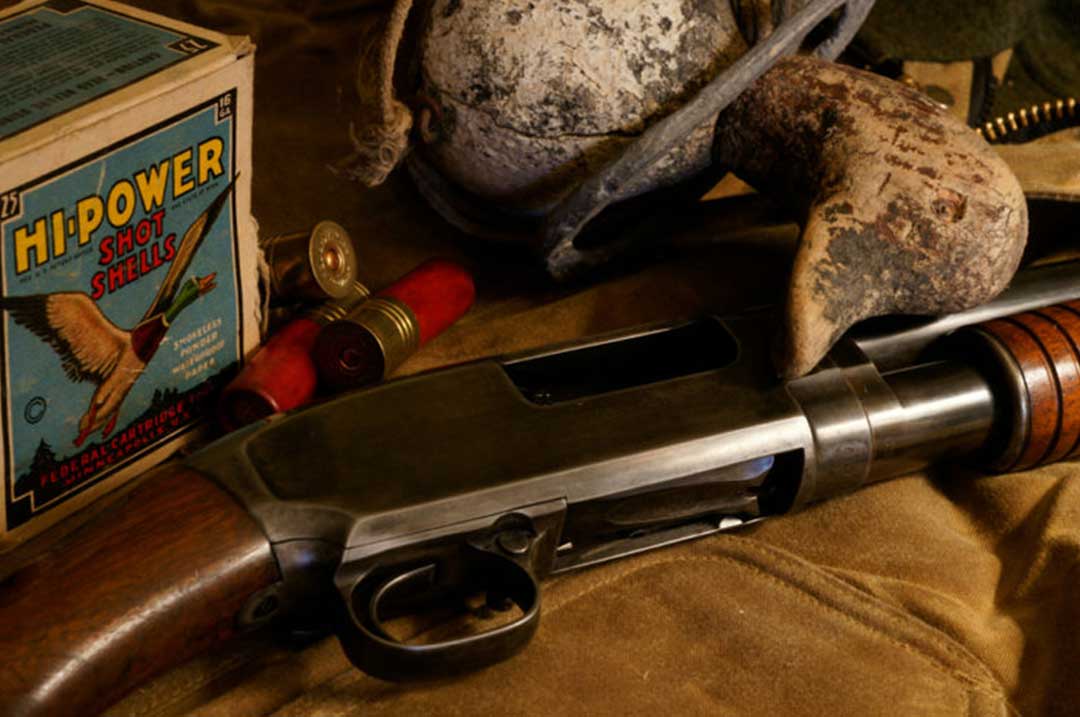There was one specific rifle John Wayne chose to use again and again in his cowboy appearances: the Winchester 1892.
John Wayne was as prolific as he was iconic. He appeared in more than 170 movies, starred in more than 140 and often had several movies in theaters simultaneously. He could make almost any movie he wanted, with anyone he wanted, for any salary he wanted. Yet with all that flexibility, there was one specific rifle John Wayne chose to use again and again in his cowboy appearances.
It was the same rifle that had help make him a star. Director John Ford took the then-struggling actor and featured him in Stagecoach as Henry “the Ringo Kid,” the rifle-slinging criminal bound for revenge and redemption at the end of a dusty wagon trail. Wayne’s character was given a signature firearm: a big-looped Winchester Model 92 Trapper with the barrel chopped short.
Ford had the gun shortened so Wayne could swing it under his arm in a sweeping, theatrical motion when reloading. The move and movie were hits with audiences and forever changed Wayne’s career. The world had fallen for Wayne’s performance, and Wayne had fallen for the Winchester’s light, lithe design.
The Winchester 1892 was the byproduct of John Browning’s Winchester 1886. The 1886 was a popular lever action among sportsmen, but it was chambered in .45/70 and required a substantial—i.e. heavy—gun. At 9 1/2 pounds, the 1886 was just that. Shooters who didn’t need bear-stopping power wanted a lighter rifle that came chambered for the pistol/rifle cartridge .44-40 and similar rounds of the day. The slimmer and sleeker 1892 was the result.
The 92 came in both a rifle and carbine configuration, each lighter than the 1886. Consumers wanted an even lighter version. Winchester responded by chopping the carbine down again to produce the special-order Trapper, available with 12- to 18-inch barrels.
Though lighter than the 1886, the 92 was still a solid machine that could handle strong cartridges. Winchester and Remington made special high-velocity, smokeless powder .44-40 offerings with the 92 in mind. Lesser guns that were accidentally fed the ammo buckled and caused the makers to take the loads off the shelf. The 92 had no problems.
Ranchers and riders like the ones Wayne would later portray fell in love with the 92 and gave it their cowboy seal of approval. Theodore Roosevelt was a fan of the gun; Rear Admiral Robert Peary took one on his successful North Pole expedition. Other movie icons used the gun as well: Steve McQueen used a 92 in Wanted Dead or Alive, and Chuck Connors carried one in The Rifleman.
In an era and industry that glamorized 1,000-yard revolver shots with guns that never needed reloading, Wayne was a firearms realist. Real cowboys would have used rifles whenever possible, and Wayne brought that level of authenticity to his films. He even used his own guns in his later career, preferring them to replicas that didn’t do the firearms world justice. The 92 was the kind of rifle cowboys used, so that’s the kind of rifle Wayne wanted.
Rooster Cogburn carried a 92 in one hand and a single-action revolver in the other, his horse’s reins in his teeth, in True Grit. The movie, in part thanks to that memorable scene, won Wayne the first Oscar of his long career in 1970. He later said that, if he had known the movie would have won him the award, “I’d have put that patch on 35 years earlier.” The Winchester would have been there too, ready to fire.
Fans clearly loved the man and the rifle. Numerous Wayne commemoratives and reproductions have been made over the years as a result. Winchester made several, including an appropriately chosen 92 on his centennial birthday in 2007, and, curiously, a Model 94 with his movie titles engraved on the decorated receiver.
Like Barbara Mandrell and country, Wayne had a big-loop lever action long before it was cool. Now function is following form: Shooters who wear gloves in cold weather or cowboy action shooting benefit from a larger loop like the Duke’s. Factory guns are being offered with the loop option and larger loops are being installed as an aftermarket feature on older guns.
The Duke left us decades ago in 1979. He was 72 and still as much of an American icon as the cowboys he played on-screen. He wanted his tombstone to read “Feo, Fuerte y Formal”—Spanish for “Ugly, Strong and Dignified.” Winchester originally stopped production of the 92 in 1941 but continued offering the rifle off and on until 2012. When it died, the rifle sported a 16-inch barrel and weighed less than 6 pounds. The 92 was far from ugly, but the other two describe it perfectly.
Both are weighty losses.
In honor of my grandfather, Bill Cooke, for introducing me to Wayne, westerns, and Winchester.
 The big-bore rifle for hunting dangerous animals is the most romantic of firearms. Names like Holland & Holland and Mauser, and cartridges like the .470 Nitro Express and .505 Gibbs, have dominated African hunting literature for a century.
The big-bore rifle for hunting dangerous animals is the most romantic of firearms. Names like Holland & Holland and Mauser, and cartridges like the .470 Nitro Express and .505 Gibbs, have dominated African hunting literature for a century.
In this book, firearms expert Terry Wieland explores the history of big-bore rifles for dangerous game, covers rifles and ammunition available today, examines controversies about killing power, and explains the nuances of big rifles and how to use them. Shop Now




